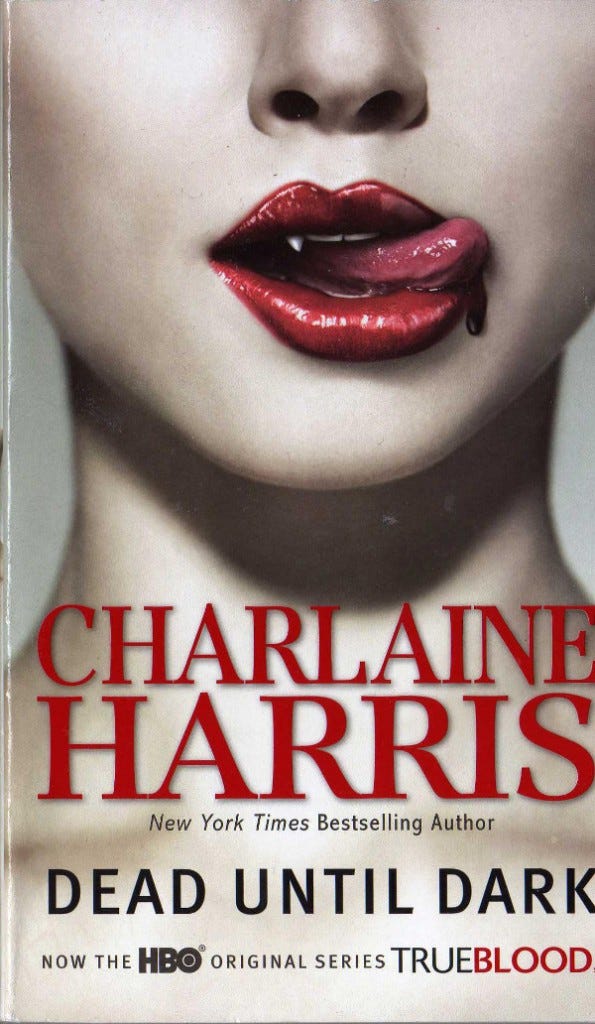Not Dead Yet
Dead Until Dark
by Charlaine Harris
Ace Books 2001, 292 pages, $7.99 soft cover

As part of our special series on popular fiction, Max Botstein reviewed this most famous of vampire novels. Come back to the Nassau Literary Review’s website for more later!
“I’d been waiting for the vampire for years when he walked into the bar.” This is hardly “Call me Ishmael,” but I suppose it gets the job done. It begins Charlaine Harris’ 2001 novel Dead Until Dark. For the uninitiated, this is the first installment in the massively-popular Southern Vampire Mysteries, perhaps better known by the title of the HBO show it inspired, True Blood.
The series, which now includes twelve novels (with a thirteenth soon forthcoming), follows the adventures of Sookie Stackhouse, a telepathic waitress in northern Louisiana with a vampire boyfriend. The books are unabashedly genre-pieces, which makes them a little hard to review critically. In the words of the Los Angeles Times, proudly displayed on the back cover, this is a “light, fun” kind of reading. I don’t mean to denigrate genre, or to promote a ‘better’ class of reading (which usually translates into a more boring class of reading), but one simply can’t compare Dead until Dark — a paranormal mystery romance with a generous helping of smut — to what the keepers-of-culture term ‘serious literature.’
With that in mind, Dead until Dark can only be assessed according to the standards of its peers, and the most immediate comparison that comes to mind is that great bogey-man of the reading elite, the Twilight Saga. They may not have an enormous amount in common, but they are both extremely lucrative franchises, and both feature young female protagonists with attractive vampire lovers, which is good enough for me.
I won’t engage here in any Twilight-bashing, that shibboleth of pretentious college students, but I will say that Dead until Dark contrasts favorably with Stephenie Meyer’s young-adult leviathan.
It is true that Sookie is a clear example of authorial wish-fulfillment, made more obvious by the fact that the entire story is told exclusively in first person. Yet Sookie is still a fairly interesting character, which can’t be said for most cases of self-insertion. Unlike other female protagonists in romance stories, Sookie is hardly a damsel-in-distress, and I have to admit that the liberal-feminist in me enjoyed reading the scene in which Sookie confronts and subdues her antagonist alone at the climax of the novel, without help from the vampire Bill, her male companion.
This may also have something to do with the fact that while Twilight is young-adult fiction, Harris’ book is more adult than anything else. One offers sublimated sexual fantasies, palatable to sheltered tweens and their parents, while the other unabashedly offers sex, and lots of it.
That said, however, the first-person perspective is exhausting. Much as I might like Sookie, I started to hope for an end to her narration halfway through the book, never a good sign. This may be a fun, exciting story, but the telling of it leaves much to be desired. If the first installment is any indication, this series is not the place to find witty dialogue, well-formed prose, or anything resembling character development.
With that in mind, maybe watching True Blood is a better option than crawling through all thirteen books in the series. With high production values, and a stable of attractive actors, it’s altogether possible that one might not notice the most glaring flaws in the story. The show is on HBO, so I’m sure they keep the sex scenes, which are probably the only reason most people read these books anyway.